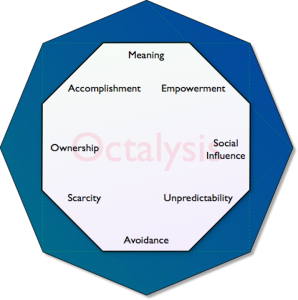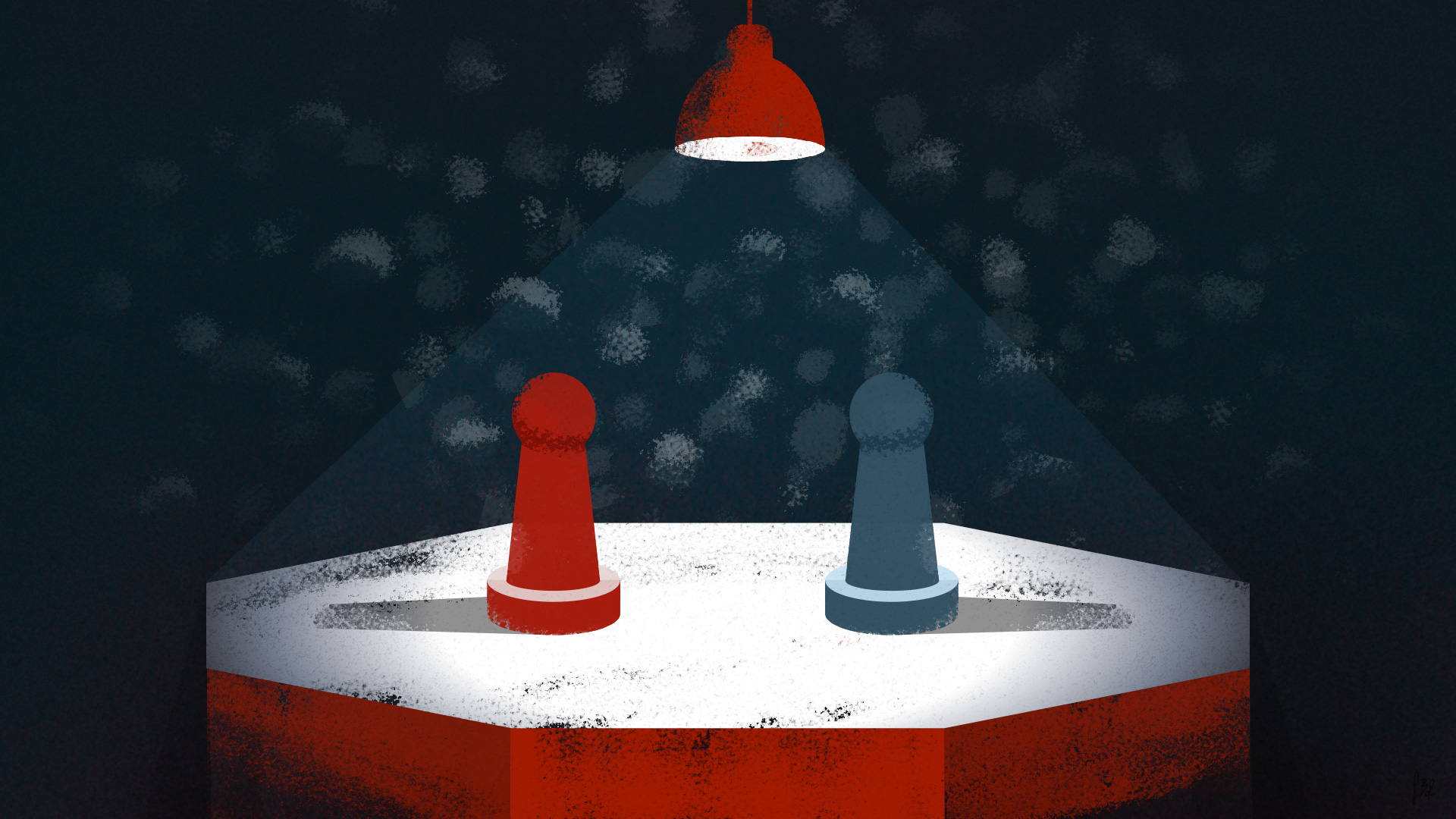GAMIFICATION OF ELECTIONS – PART 5
Of course, filling an XP bar and collecting badges is not why people play a game Those are merely mechanics to engage the player on a deeper level, using human psychology. Gamification mechanics are tools, not the actual goal of a gamified app. So, in order to craft an experience the player actually enjoys, designers have to design for player motivation, not for mechanics. The Octalysis helps in this regard, as it divides player motivation in distinct categories, that are easy to design for.
Obviously player motivation isn’t this fix, unchanging constant. It changes depending on different factors, but what probably impacts it the most is the current phase of the user journey. The 4 most important stages are: Discovery, Onboarding, Scaffolding and the Endgame. It should be obvious that for example, during the Onboarding phase – when the player starts the app/game for the first time and gets acquainted with the system – the goals and motivations of the player differ substantially from the motivations during the Endgame stage – when the player is already used to the game, knows the ins and outs, and has seen most there is to see. So, designing for those specific parts of the user’s journey through your app or game and changing the incentives accordingly is a must.
To finish up this chapter, here are the last 4 of Yu-kai Chou’s Octalysis Core Drives:
- Drive #5: Social Influence & Relatedness
Humans are innately social beings. Societies exist purely because of that one fact. So, in order to coexist with other kindred individuals as frictionless as possible, humans have developed several distinct methods to behave, adapt and act in groups. Companionship: humans looking for other like-minded people; Acceptance: humans complying with the group’s norms and rules in order to avoid being the “odd one out” and to be accepted. But also more aggressive behaviours like competition between groups/members and envy are very strong and ancient human drivers. Studies have repeatedly shown how much of a factor the “social norm” plays in our actions. According to one study, showing hotel guests a sign that read “75% of people in this hotel reused their towels” increased the reuse by almost 25% compared to the usual signs, that just asked guests to do so. The “norm” was plastered on the wall, and people naturally tried to comply.

- Drive #6: Scarcity & Impatience
Another fundamental impulse of our human brain is the concept of scarcity. Humans want something because they can’t have it. Dangling a carrot before someone, just out of reach is an old but effective method to stoke motivation. Promising something to a person that they normally wouldn’t be able to get will motivate them for days – they will literally lose sleep over it. Getting a table at that fancy restaurant, where you have to book weeks in advance? Standing in line for the release of your favourite new gadget – even though you just could order it online? Impatience (briefly discussed earlier) is the second big part of this drive. Patience is a virtue – rightfully so – because in general humans are lacking in this regard. To engage this emotion, let the users wait. So-called moats will force the player to wait for the outcome of their actions. They will sit there, all day, fantasizing about the castle they just started construction on in their game, barely containing the urge to check every few minutes on the progress (sounds familiar?). These gamification techniques sound a lot more sinister than the ones that came previously. This is why Yu-kai Chou classified them and the next view drivers as “Black Hat” Gamification techniques (compared to the generally more positive “White Hat” techniques from earlier). - Drive #7: Unpredictability & Curiosity
Not only cats are killed by curiosity: humans are extremely inquisitive creatures as well. The “just one more page” phenomenon is a direct result of this trait. Cliffhangers at the end of episodes ensure that we will tune in again next time and unpredictable twists in stories will delight us far more than a formulaic ending. Ever wondered why some people are addicted to something as simple as slot machines? Something that technically doesn’t need any skills at all, besides the ability to pull a lever (and insert metallic tokens of a predetermined value). This very drive is the reason. Loot boxes – a very modern invention with an explosive rise in “popularity” amongst designers – are basically the same thing. In short, if an outcome is uncertain, players will be far more engaged than when they know exactly what to expect. - Drive #8: Loss & Avoidance
There would be no point in accumulating wealth, power and fame if we didn’t care about retaining said earnings. This is where this intrinsic motivation comes into play. Humans are really, really compelled by loss aversion – curiously also by immaterial, perceived loss. Amos Tversky and Daniel Kahneman demonstrated in the late 70s that people that lose $100 lose more satisfaction than satisfaction is gained from winning $100. Another impressive example of loss avoidance on an imaginary level is the famous “sunk-cost fallacy. Also known as “escalation of commitment”, it is defined by Wikipedia
a human behavior pattern in which an individual or group facing increasingly negative outcomes from a decision, action, or investment nevertheless continues the behavior instead of altering course. The actor maintains behaviors that are irrational, but align with previous decisions and actions.
Where a rational being would cancel a failing project, humans tend to stay on course – against better judgment – and sometimes even investing further resources. Checkpoints/Save-points are the classic example for this drive. Back in the days gamers would keep their game console running for days in the background, just so the lack of save-points wouldn’t erase the progress made, Also in this category, you’ll find “timed special offers”. Players will feel a loss in not taking up an offer – even though they didn’t spend any money at this point. Just the thought of paying more counts as a loss in a human’s head.
For the penultimate chapter I will analyze the popular language learning app Duolingo to demonstrate how gamification of learning works in action.
Up next: ¿Hablas gamificación?
Further reading:
https://yukaichou.com/gamification-examples/octalysis-complete-gamification-framework
https://en.wikipedia.org/wiki/Escalation_of_commitment
